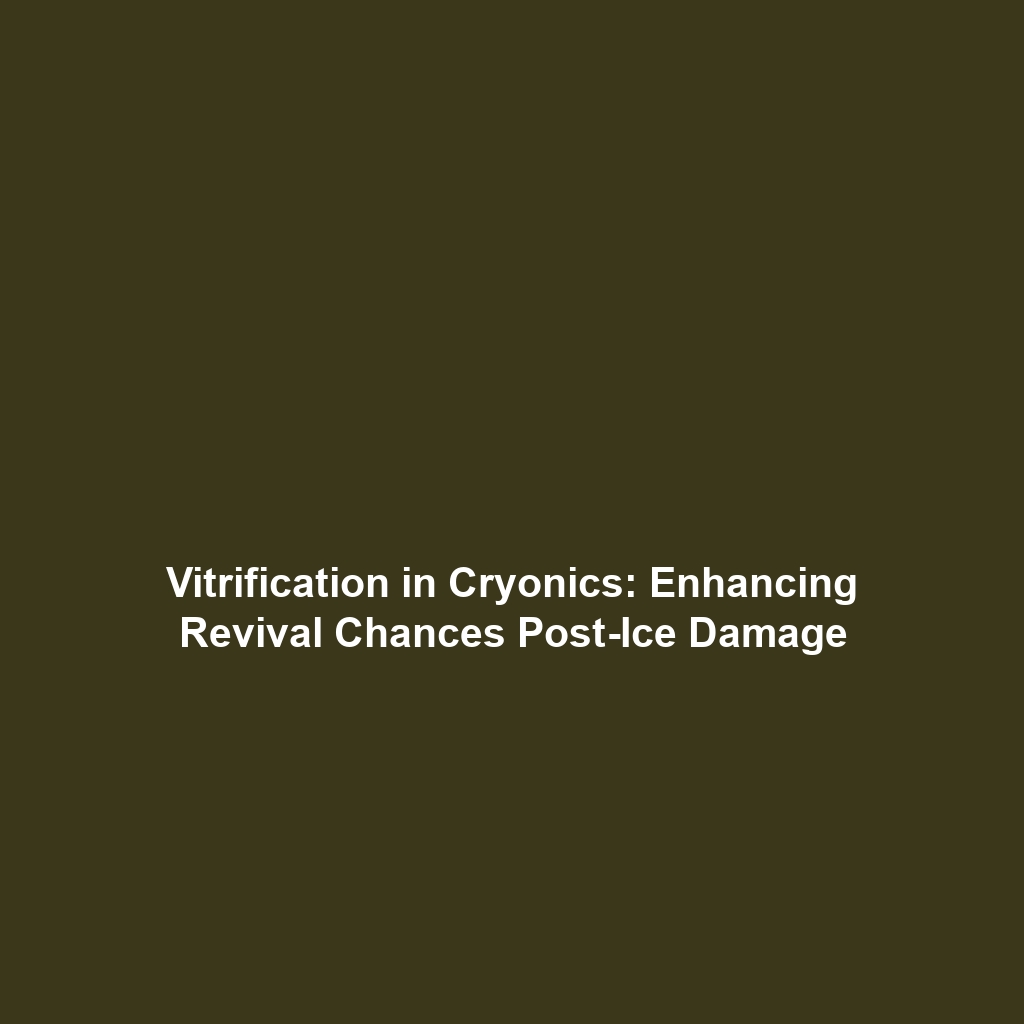Advantages: Vitrification Reduces Structural Damage Associated with Ice Formation, Increasing the Chance of Future Revival
Introduction
In the realm of Cryonics & Life Extension, the process of vitrification stands as a pioneering technique that promises to revolutionize how we perceive preservation and revival of biological tissues. Vitrification is a method that converts a liquid into a solid glass-like state without the formation of ice crystals, thereby significantly reducing the structural damage caused by conventional freezing techniques. The implications of minimised ice formation extend beyond mere preservation; they enhance the potential for successful revival in the future, making it a critical focus area for cryobiology and life extension research.
Key Concepts
Understanding Vitrification
Vitrification relies on the rapid cooling of biological materials, preventing ice crystals from forming. Ice can puncture cell membranes, leading to irreversible damage. Here are essential elements of vitrification:
- Amorphous Solid Formation: Vitrification turns liquids into a non-crystalline state.
- Reduced Cell Damage: The absence of ice crystals prevents physical damage to cellular structures.
- Enhanced Survival Rates: Research indicates higher revival success rates with vitrified cells compared to traditionally frozen ones.
These principles underscore the significance of vitrification within the broader scope of Cryonics & Life Extension practices.
Applications and Real-World Uses
Vitrification is being utilized in various ways within the sphere of Cryonics & Life Extension. Notable applications include:
- Preservation of Oocytes and Embryos: Vitrification is employed in reproductive technology to enhance the viability of sperm and eggs by preventing ice damage.
- Cryopreservation of Tissues: Techniques using vitrification are applied to maintain organ sterility and viability for potential transplants.
- Research in Cellular Preservation: Vitrified cells are vital in stem cell research, supporting breakthroughs in regenerative medicine.
These practical uses illustrate how vitrification contributes significantly to advancements in cryonics and life extension.
Current Challenges
Despite its potential, several challenges exist in applying vitrification within Cryonics & Life Extension:
- Understanding Long-term Effects: The long-term effects of vitrification on cellular and tissue viability remain insufficiently researched.
- Cryoprotectant Toxicity: The chemical agents essential for vitrification can be toxic to cells, requiring careful formulation.
- Cost and Accessibility: The technologies involved in successful vitrification can be prohibitively expensive and complex to implement.
Future Research and Innovations
Attention toward enhancing vitrification techniques continues to grow. Future research areas include:
- Development of Advanced Cryoprotectants: Innovative solutions are being researched to minimize toxicity and enhance cellular compatibility.
- Automated Vitrification Systems: Robotics may standardize and reduce costs associated with vitrification processes.
- Mapping Cellular Responses: More studies are needed to understand how various cells respond to vitrification, enabling better preservation strategies.
These innovations promise a significant impact on the viability of Cryonics & Life Extension techniques.
Conclusion
Vitrification presents compelling advantages by reducing the structural damage associated with ice formation, enhancing the chances of future revival for preserved biological materials. As the field of Cryonics & Life Extension progresses, ongoing research and innovative practices will further our understanding and capabilities in this promising area. For more insights into cryonics and life extension, explore our related articles on advancements in cryobiology and the future of stem cell research.
